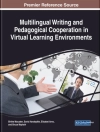This book may be used for research, graduate and undergraduate teacher education, and teacher development. It presents an integrated set of studies of a heterogeneously grouped class of twenty-one nine-year olds, engaged in exploring fraction ideas prior to classroom instruction under conditions that supported investigation, collaboration and argumentation. It demonstrates with text and video narrative how young children can reason about mathematics in surprisingly sophisticated ways when provided the opportunity to do so in the proper classroom environment. In this volume, fourth grade students’ reasoning about fraction concepts is described through careful analysis and accompanying video excerpts showcasing the variety and originality of their thinking. These children will serve as an inspiration for educators to encourage the development of reasoning and argumentation in their students as part of a mathematics curriculum designed to produce critical thinkers.
İçerik tablosu
Foreword; Acknowledgements; Introduction; The Experiment; Establishing a Mathematical Community; A Problem with No Solution; Designing a New Rod; Reasoning by Cases While Exploring Fractions as Numbers; Developing the Foundation for Proportional Reasoning; Establishing the Importance of the Unit; Switching the Unit; Justifying the Choice of the Unit; Determining Fraction Equivalence; Using Reasoning to Resolve Conjectures; The Development of Upper and Lower Bounds Arguments While Comparing Fractions; Using Generic Reasoning to Compare Fractions; Recursive Reasoning: Building Multiple Models; From Rod Models to Line Segments; Students’ Argumentation about the Density of Fractions; Comparing and Ordering Fractions; Extending Fraction Placement from Segments to a Number Line; Epilogue; Appendix A: Fraction Tasks and Activities by Chapter; Appendix B: Fraction Dissertations from the Colts Neck Intervention; Appendix C: Video Narratives by Chapter and Author(s); Index.












